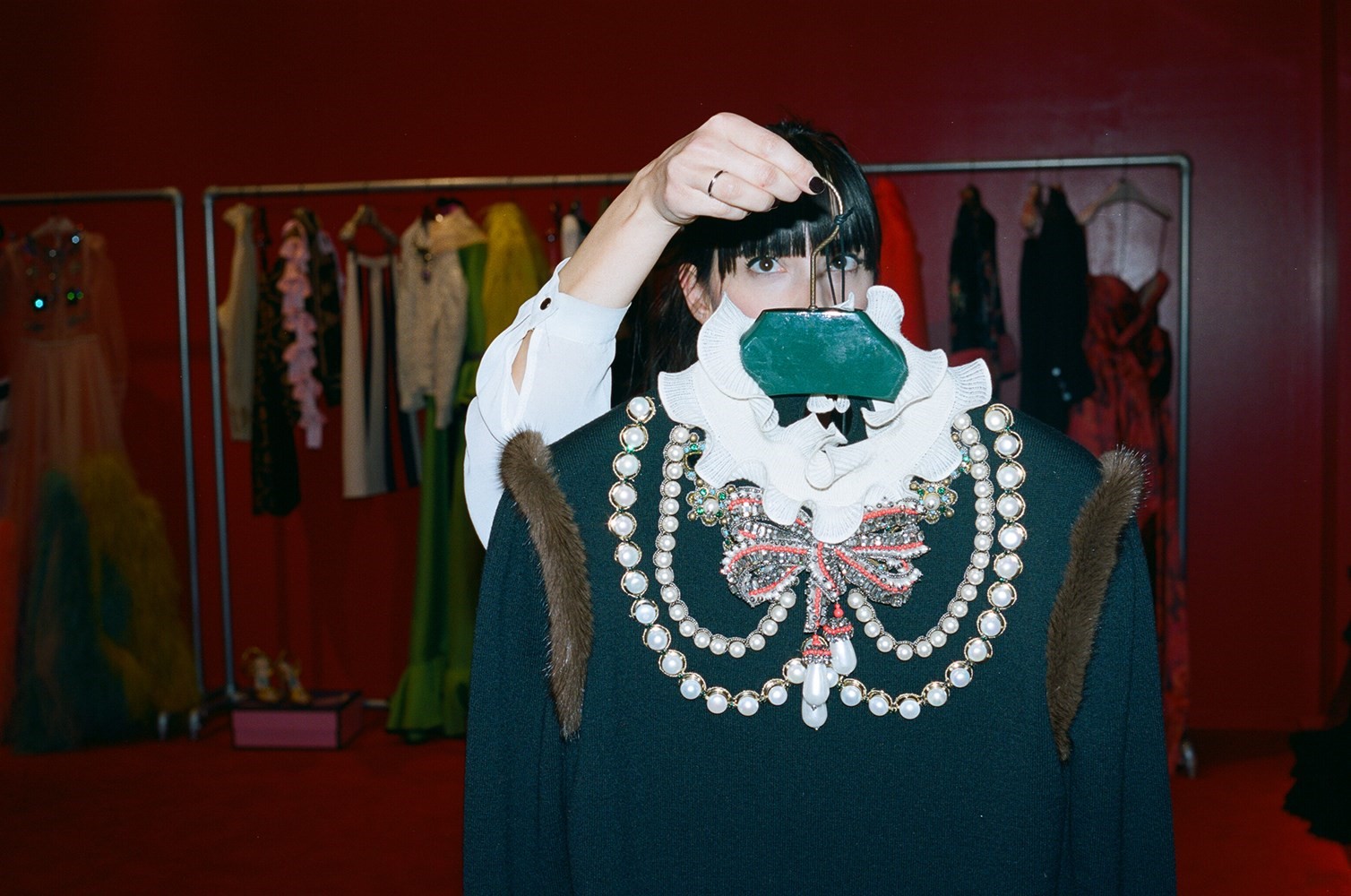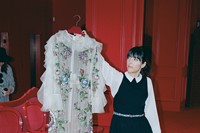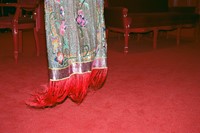“Rhizomatic Scores” was the name Alessandro Michele alighted on for his Autumn/Winter 2016 Gucci show, echoing the thought process of French semiologists Gilles Deleuze and Félix Guattari. It sounds unlikely to tie such long-winded, multiple syllabic terminology to clothing, particularly at Gucci, a house hitherto known for collections thematically adherent simply to one, three-letter word: sex. But rhizomatic chimes with Alessandro Michele’s notions of fashion, a non-linear, non-narrative approach that scrambles notions of chronology and causality.
Who can say why a sequinned cheongsam followed a bubble-gum pink fur chubby followed a white exaggerated-shoulder trench-coat? Who can explain why beaded baroque gems cluster the neck of an evening dress apparently pieced from an elongate football jersey? You’d expect Michele to do so, but his rhizomatic reasoning is a get-out. It eschews cause, and ceaselessly establishes connections between seemingly disparate semiotic chains. It resists order, allowing connections, say, between the 1570s and the 1970s, between Yves Saint Laurent and Catherine de Medici. As a fashion designer, that gives you a great glut of freedom to explore. “It’s completely my way to work,” reasoned Michele, backstage, his face glittering with the refracted light of a few dozen million sequins. “The fragments for the past, for me, are not without life.”
Michele’s fashion is embedded in the past, but like the rhizome – which in botany and dendrology, denotes that clumpy mass of multi-tendrilled roots, tangled, with no discernible beginning or end – it’s not a straightforward revival of a given decade, a linear (re)presentation of a decade. Many reasons that Michele’s clothes are seventies – he himself calls the seventies “the most powerful image, for me, for the brand”. Yet Michele’s vision of the seventies is muddled, like those creeping subterranean root-stalks. “A rhizome has no beginning or end,” declared Deleuze and Guattari, in a series of works they titled Capitalism and Schizophrenia. “It is always in the middle, between things, interbeing, intermezzo.”
As such, we never pinpoint the start or the end of Michele’s journey – we are never plunged into the decade true, nor emerge from it. Michele himself cites memory as an inspiration – his personal recollections, rather than a precise recreation. Something hazy and conjured at will, reimagined anew. “I change,” said Michele, turning over cloth, allowing that his seventies isn’t like my seventies, or indeed your seventies. Especially when it’s encrusted with embroidery, knotted with bows, smothered with fur. “But in a way it could be, again, a piece of memory. And after you have to cut again, like a collage. If you cut, it’s different. The way you combine together, it’s different.” What Michele is getting at is: nothing is exact, everything is not only open to interpretation, but by its very nature interpreted. “Your memory is not my memory,” he said.
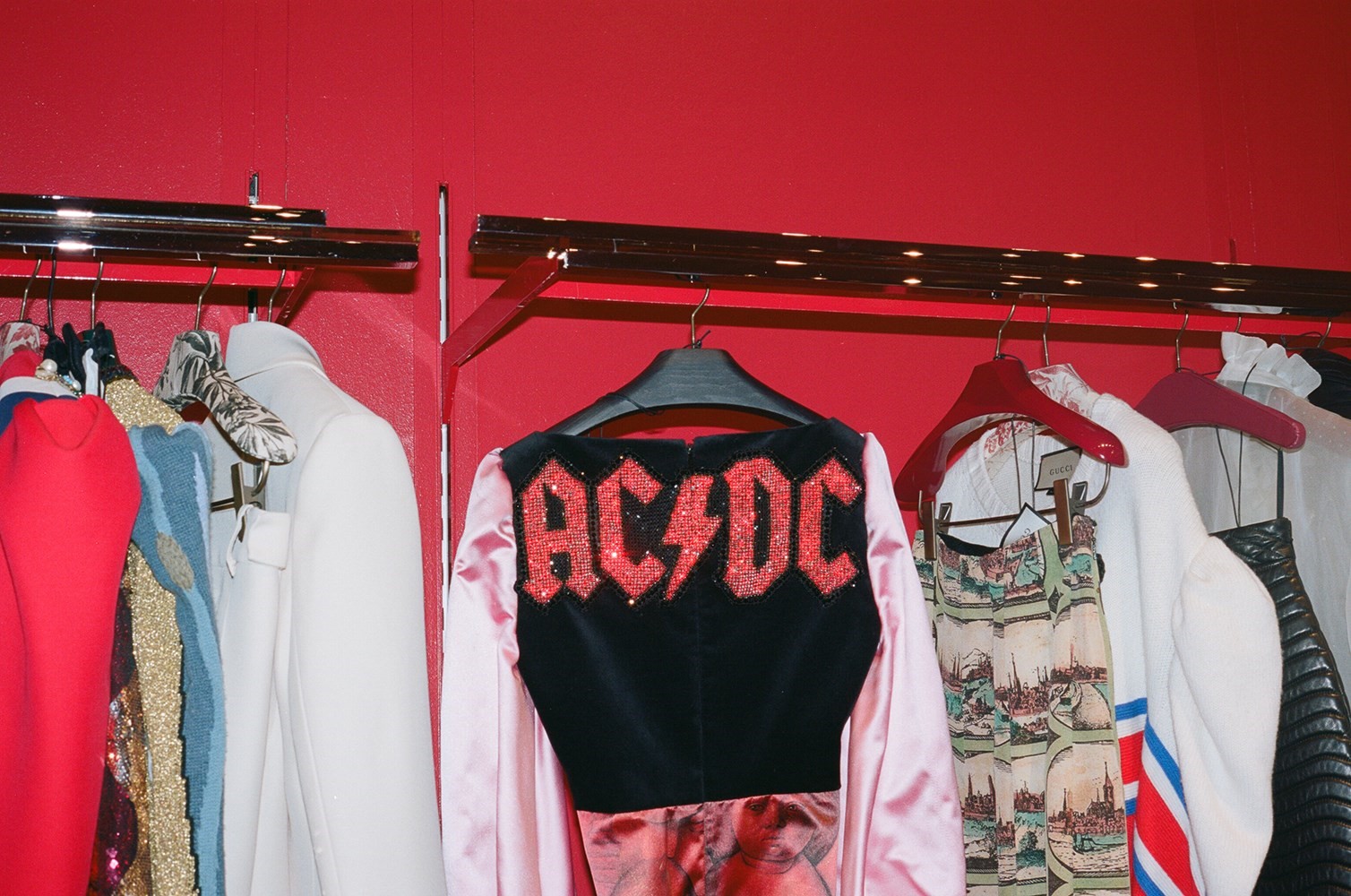
It made me think, oddly, of Vivienne Westwood – whose clothes Michele’s do not recollect, but whose approach is similar. Westwood once stated of her reproduction of historical styles that, as she was unable to use the original fabrics, the results were ipso facto modern. That historical styles become contemporary by their very creation in modernity (she was actually talking about the robe à la Française, copied from the 1759 Boucher portrait of Madame de Pompadour for her Autumn/Winter 1995 collection 'Vive la Cocotte', which was photographed by Alistair McLellan for the latest issue of AnOther). Ulrich Lehmann has reasoned the same in his book Tigersprung – meaning tiger’s leap – a borrowing from Walter Benjamin who equated it to fashion's leap into the past to create an ever-changing present. Michele, of course, does the same. “If you take something that has no life with something that has life, if you put together… it’s like a chemical effect,” he allows.
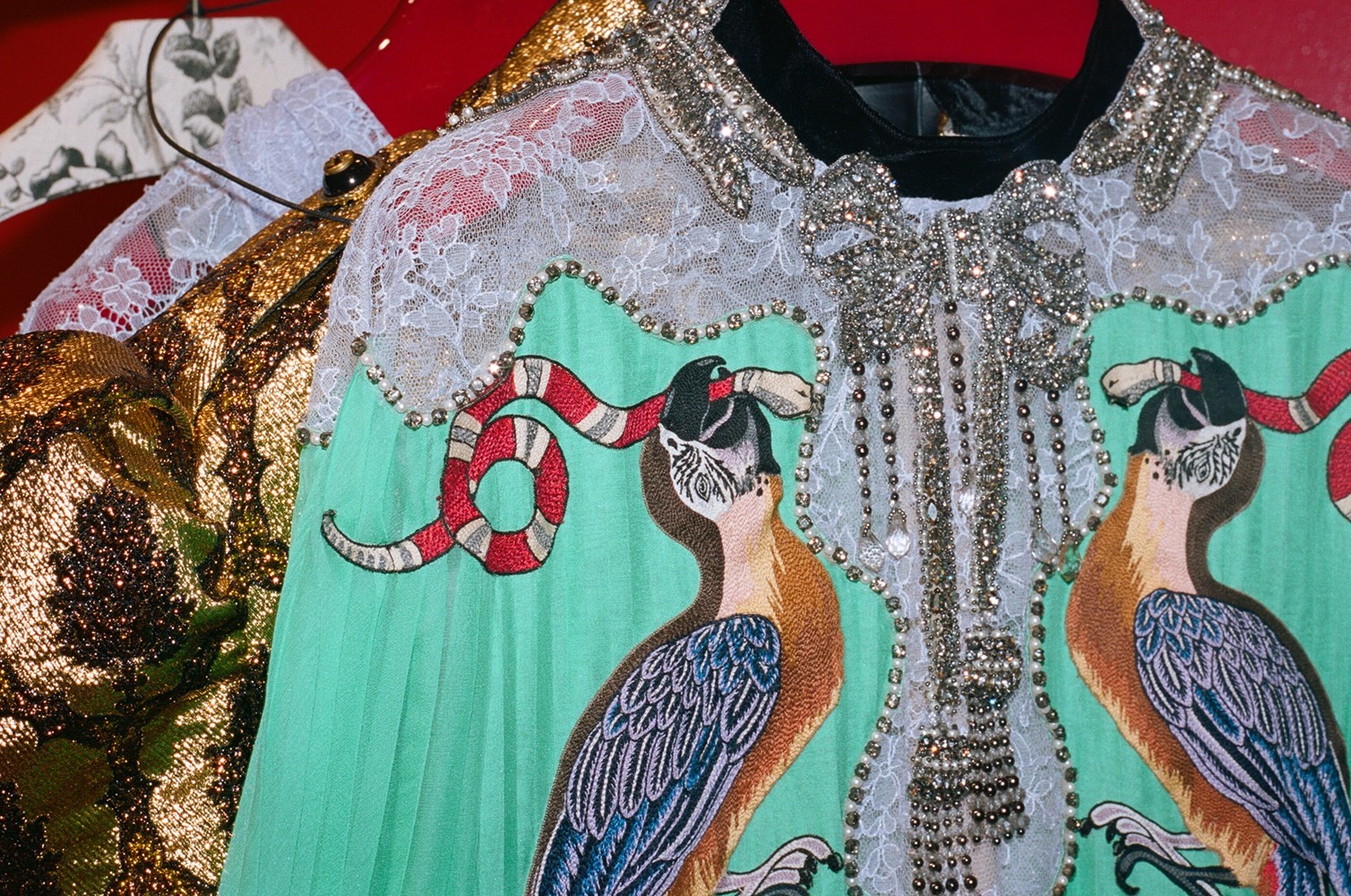
Deleuze and Guattari’s rhizomatic view of history reasons that culture “spreads like the surface of a body of water, towards available spaces, trickling downwards towards new spaces through fissures and gaps.” So it has been with Michele’s Gucci, whose influence has seeped across fashion as a whole, informing the collections of multiple disparate designers, albeit less interested in knotty philosophy, and more in harnessing the success of Gucci to make themselves a buck or two.
There’s also an undeniable aesthetic appeal to Michele’s rich clothes, to garments imagined not as a connected web to tell a story but each as a singular entity, created, preciously, in its own right. That looks like a great idea right now – one that’s well and truly taken root. Before the show, Michele extorted viewers to take his clothes, and “make them yours”. He meant philosophically, but why not materially, too?
